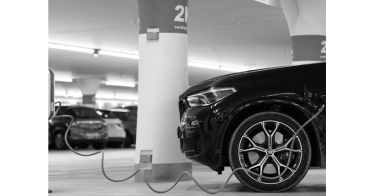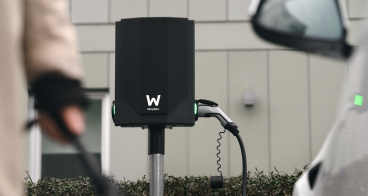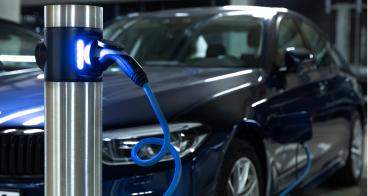Electric vehicles and the grid: Are we ready for electrification?
The latest publication from the Smart Cities Marketplace helps city officers understand the current state of play for electric vehicles and their interaction with the grid, identifying best practices and real-life implementations, and addressing technological, regulatory and business constraints.
The way people use vehicles in cities is changing. Changing to sustainable urban mobility patterns that meet the 2050 carbon neutrality targets is a major challenge in any city, with infrastructures needing to be designed or redeveloped in such a way that they promote the most sustainable transport modes, making sure people will effectively change their mobility behaviour.
There are several benefits to EVs over conventional petrol/diesel cars. Several studies show that the overall lifecycle emissions of EVs, when compared to conventional vehicles, are substantially lower, representing decreases in greenhouse gas emissions from 19% to 69% [1]. By eliminating tailpipe emissions, EVs have the potential to improve air quality, resulting in health improvements. Moreover, noise reduction and lower maintenance are other benefits of EVs.
Where is Europe in terms of electrification?
According to the European Alternative Fuels Observatory, in 2023, there were around 4.7 million electric passenger cars on European roads, an almost 10-fold increase compared to 2018. Such rapid increase poses huge challenges to the electric grid, which has to withstand added pressure from the charging of electric vehicles.
Charging infrastructure for electric vehicles can be distinguished into two different categories: public charging stations (e.g., public parking) and private charging stations (e.g. at home). While 80% of private EV buyers have access to private charging, public charging access is a different story. According to a survey conducted by the Organisation for Economic Co-operation and Development, OECD, in six European countries, a third of the respondents reported that there were no public charging stations for electric cars within three km of their homes [2]. With the increase in EV uptake, the public charging infrastructure will need to grow significantly to democratise access to EVs, amongst other measures.
Increasing electricity demand in the city puts extra stress on the energy infrastructure, which in some locations might exceed the network capacity. As an example, around 3,000 neighbourhoods in the Netherlands with at least 100 EVs are expected to exceed the grid capacity by 2025, caused by the fast uptake of EVs [3]. EVs have the potential to significantly contribute to cost-effective electricity generation support and storage due to the built-in energy storage capacity of their onboard batteries. Without exploiting EVs flexibility, their high volume poses a challenge to the electricity grid.
Opportunities to explore
The integration of electric mobility will significantly impact the energy market and the grid, making it essential to exploit EV charging flexibility. There are technologies available that address these challenges, such as:
Smart charging: delaying the moment of charging to ensure that the charging peak does not coincide with the household peak, which occurs around 7.00 and 18.00. When parked during the day, smart charging can be aligned with moments of excess resulting from solar or wind energy. Similarly, the charging could be interrupted temporarily when there is a risk of an imbalance between supply and demand, both at a national and local level. Start-ups like Inbalance Grid, Bia Power, and Waybler are examples of mature solutions for smart charging.
Vehicle-to-grid (V2G): when the vehicle allows bi-directional exchange with the grid. The EV can not only be used to relieve stress from the grid by smart charging, but it can also actively support the electricity grid (V2G in a discharging mode). Moreover, the EV can operate as a power backup for buildings, contribute to local congestion management, optimise consumption on the building or neighbourhood level and maximise the use of renewable energy sources. However, to become a fully mainstream technology, V2G services require improvements in both the business case and the regulatory frameworks.
Technical challenges
The complexity of harmonising diverse technologies and systems within the EV ecosystem presents technical challenges that need to be addressed for a smooth uptake. The early state of these technologies means that many systems are still evolving, requiring substantial advancements in both hardware and software to achieve reliable and efficient operation.
Battery degradation: by allowing an external entity to control battery charging and discharging, the number of charge cycles will increase, slightly degrading the battery with each cycle. This degradation challenges EV manufacturers, who hesitate to enable V2G due to its impact on battery life. However, advancements in battery technology and management systems have reduced this impact, as recent studies indicate that the effect of an extra cycle is negligible compared to the effect of driving an EV [4].
Standardisation of communication standards: to make the most of the V2G technology, information needs to be available. With new standards such as ISO 15118-20, charging protocols (communication between charging point and EV) already allow detailed information transfers. However, understanding the required data types for each operation is challenging, and grid information across Europe is inconsistent. The European Commission is investing in the development of standards to enable and even oblige better communication between all involved actors. Conclusion and recommendations on concrete communication protocols for the main areas of the EV recharging ecosystem are available online [5].
Societal, governance, and regulatory barriers
Technologies like smart charging and V2G are challenged to compete in traditional energy markets that are not fully aligned with their capabilities. Energy regulation is complex and provides an obstacle for emerging technologies like smart car charging and V2G to make an immediate impact. Moreover, societal aspects highly influence the user adoption of these technologies. The main barriers are presented below.
Unavailability of information and distrust: the average EV user has limited knowledge about batteries, the electricity grid or the benefits of smart charging and V2G. This lack of knowledge, together with prevalent misinformation regarding the potential benefits of these technologies, easily leads to misconceptions about smart charging and V2G and increases consumer distrust.
Third-party access to vehicle: with smart charging or V2G, the charging of the EV is controlled by a third-party controlling algorithm. The EV user allows an external party to influence his vehicle and how and when it is charged and/or discharged. Not all EV users are comfortable allowing this access, fearing algorithm errors might prevent them from using their car as intended. This kind of control also requires attention to privacy and data protection and the alignment of third parties with the applicable laws.
Range anxiety: the fear that a vehicle provides an insufficient range to reach a certain destination. In contrast to traditional petrol/diesel vehicles, EVs require some time to connect to the grid before they are ready for departure. With smart charging and V2G, the EV might not immediately be charged to maximum capacity. This increases range anxiety because the car might not have the maximum amount of range in case of an emergency or an unexpected trip.
Roll-out of charging infrastructure: the integration of chargers in the public domain is a slow process as the interaction with the involved stakeholders is often unclear.
Lack of incentives: smart charging currently offers limited added value beyond self-consumption and peak shaving. Although some European countries allow chargers to participate in the energy market, their adoption is still low. Financial and regulatory support, such as funding for bi-directional chargers and regulatory sandboxes for pilot projects, is needed.
Business models to boost EVs
To enable business models that facilitate flexibility from EVs, cost savings must be enabled for single end-consumers. From designing tariffs to market bidding, several mechanisms can be deployed to turn cost savings into remuneration.
Designing dynamic tariffs: tariff design is a technology-neutral approach that aligns charging decisions with grid costs based on periods and locations to reduce system costs. Designing specific EV tariffs and separating metering can enhance EV charging flexibility while preserving static tariffs for other uses. As an example, a study from the European Union shows that using real-time pricing can save up to 27% of power generation costs [6].
Providing grid services: As an alternative to designing tariffs, market-based procurement, through local flexibility markets, allows bidding based on capacity and energy, prioritising the use of the lowest-cost flexibility resources. Because of the low margins on energy trading, these business cases are more interesting for aggregators, fleet managers or public transport electric mobility operators that have access to a larger capacity of energy.
Energy reserves: intermittent distributed renewable production complicates balancing energy demand and supply. To maintain power quality, “energy reserves” are engaged where capacity is reserved if the supply is unable to meet the demand or the other way around. As EVs can react instantly (between 0 and 30 seconds) to frequency variations, they are very well suited for frequency regulation, which demands fast actions on the supply or demand side.
V2G and other services: combining V2G and already existing mobility services in cities, such as public transport and carsharing, can generate added revenues for fleet managers. Electric bus fleets, due to their typical high capacity and driving time predictability, are a natural fit to provide grid services. Concurrently, carsharing operators have the added benefit, as public transport, of the ownership structure, mitigating existing societal barriers. Information availability, range anxiety, insurance and third-party access to the vehicle are minor issues in a business-to-business relationship. This combination of mobility services and V2G is, therefore, a promising business case in a city context.
General lessons learned
Most societal barriers towards smart charging and V2G are a result of third-party access to the vehicle. By understanding user needs and fears, industry and government can work together to educate the public.
The exploitation of EV charging flexibility is key to mitigating their impact on the grid. Smart charging can decrease peak consumption and contribute towards a high renewable energy systems uptake which will significantly reduce associated emissions. Plus, V2G technology can help balance the electricity grid that might come under pressure with a high uptake of EVs.
From a technical and commercial point of view, smart charging is a mature technology. While various pilot projects throughout Europe have proven the technical feasibility of supporting the grid with EVs, V2G needs consolidation from a business and regulatory perspective.
For V2G solutions to be successful, they need to address users’ concerns regarding the control process of the vehicles. This V2G process should be communicated adequately to the users and allow them to control some of the processes.
The current regulatory framework is not aimed at small, distributed energy sources entering the energy trading market. To increase the uptake of grid-interactive charging, changes and support from national or local policymakers are required.
What can you do as a city?
- Support pilot smart charging and V2G initiatives with funding or tax reduction.
- Assign regulatory sandboxes where energy experiments can be conducted with energy tariffs.
- Make a joint assessment with the grid operators to find opportunities where smart charging can help to balance the grid in the future.
- Inform users and citizens about the benefits of smart charging and V2G through social media campaigns, informational events or educational activities.
- Design compelling economic incentives for EV users to adhere to V2G, as they are the actors who ultimately decide whether to participate or not.
- Create products or solutions that address the fears and concerns of users, such as allowing them to control the charge/discharge through customisable apps.
- Connect different stakeholders to participate in innovative pilot projects (car manufacturers, grid operators, aggregators, …).
- Incentivise EV stakeholders (dealerships, maintenance shops) to provide a support network for businesses that want to electrify their fleet through economic incentives or rewarding schemes.
- Promote alternative business models where traditional mobility services are combined with energy services through smart charging or V2G technology.
Access the full Solution Booklet on Electric Vehicles and the Grid now. The Booklet is available in English, German and French.
[1] The International Council for Clean Transportation (2021): A Global Comparison of The Life-Cycle Greenhouse Gas Emissions Of Combustion Engine And Electric Passenger Cars.
[2] OECD (2023): How Green is Household Behaviour? Sustainable Choices in a Time of Interlocking Crises.
[3] ElaadNL (2021): Elektrisch rijden in stroomversnelling – Outlook Q3 2021.
[4] 14 K. Uddin et al (2021): On the possibility of extending the lifetime of lithium-ion batteries through optimal V2G facilitated by an integrated vehicle and smart-grid system.
[5] Directorate-General for Mobility and Transport (European Commission) (2022): Mapping of the discussion concerning standards and protocols for communication exchange in the electromobility ecosystem.
[6] European Commission (2019): Effect of electromobility on the power system and the integration of RES.
The Smart Cities Marketplace is a European Commission initiative supporting small and mid-sized cities in their carbon neutrality journey. The Smart Cities Marketplace supports project developers in the planning, implementation, and financing of city projects in mobility, energy and ICT.






